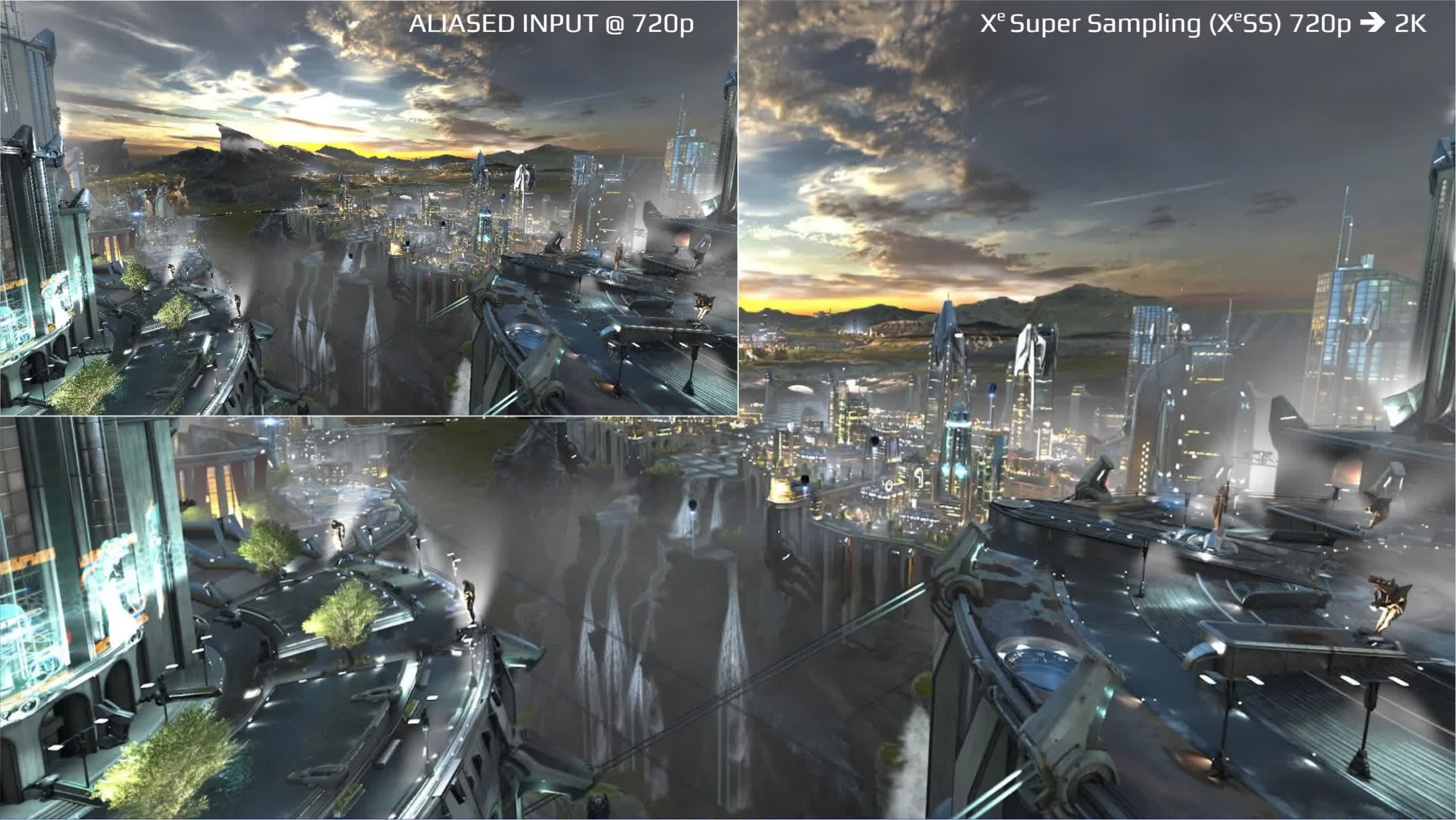Something to look forward to: Just days away from the launch of its first dedicated graphics cards, Intel has released a presentation at GDC 2022 on the ins and outs of its upscaling technology. The slideshow offers an in-depth look at XeSS and what to expect in terms of performance uplift.
This week, Intel presented a detailed rundown of XeSS, the company’s competitor to Nvidia DLSS and AMD FSR image upscalers. Much of the keynote elaborates on what Intel had previously revealed, but it does contain some new details.
Intel has revealed that XeSS would have five scaling modes offering a range of compromises between frame rate and image quality — more than either of its competitors. For example, Quality mode will scale an image by 50 percent.

Intel claims upscaling an image from 1440p to 4K improves performance by 53 percent compared to native 4K. However, the quality of the upscaled image compared to native resolution remains to be seen.
Intel says XeSS will have an Ultra Quality mode that will only scale by 1.3 for better image quality, whereas DLSS and FSR both have a Quality mode as the highest preset, which upscales by 50 percent. That said, Redditors found evidence of an upcoming Ultra Quality mode for DLSS last summer.

Click to enlarge.
All three technologies seek to improve gaming frame rates by scaling from lower to higher resolutions, but each one uses slightly different methods. Interestingly, DLSS has gotten impressive results through machine learning, which requires hardware exclusive to Nvidia’s current graphics cards.
Team Red also recently unveiled FSR 2.0 which uses temporal upscaling, allowing it to work on AMD, Nvidia, and Xbox console GPUs. Intel XeSS also uses a temporal method and AI accelerators. It will work best on the XMX cores used by Intel’s GPUs, but should work nearly as well on AMD or Nvidia hardware through DP4a instructions.
One challenge Intel said it is trying to address is ghosting — something DLSS and FSR have been dealing with — which causes brief afterimages to appear when objects are in motion. Intel has also integrated XeSS into Unreal Engine 4 and 5, where the feature is currently in a closed beta.
The first Intel GPUs will launch for laptops on March 30.

